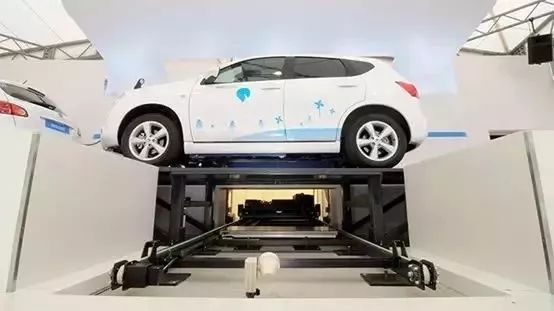Most new things initially grow through questioning. Renault’s innovative electric vehicle battery leasing program is no exception.
Perhaps in China, many people are more familiar with the battery leasing program for the recently launched NIO ES8. If you choose the battery leasing program when buying an ES8, the car price will be 100,000 yuan cheaper than the whole car with a battery, with a monthly battery rental of 1,280 yuan, and the battery upgrade service is also available.
NIO’s basic battery leasing plan is similar to Renault’s, including the battery upgrade service. However, the details are not as comprehensive as Renault’s.
Renault Zoe has achieved great success through the battery leasing sales model, with sales of more than 30,000 units in Europe in 2017, ranking first in European electric car sales, and also ranking in the top 10 in global electric car sales since its launch. This is the only electric car sold through only battery leasing since its launch.
So how did Renault start this new thing of battery leasing?
A History Story Ten Years Ago
To talk about battery leasing, one cannot avoid mentioning Better Place, which died a few years ago.
In 2007, Israeli entrepreneur Shai Agassi founded Better Place, which mainly provided services for changing electric vehicle batteries. He sold his idea to investors back then by saying that the battery-swapping model would break through the bottleneck of “expensive prices,” “limited battery life,” and “mileage anxiety” for electric cars. He also predicted that global sales of electric vehicles would exceed hundreds of millions by 2020.
At that time, Shai Agassi was recognized as an entrepreneur with great foresight, which is definitely not an exaggerated evaluation today. Better Place raised more than $850 million in financing, with investors including General Electric, Morgan Stanley, HSBC, and Israeli group. It was the fifth-largest start-up company in history.
Better Place created a disruptive change in the industry at that time. It purchased batteries from battery suppliers and owned battery ownership, only providing consumers with battery replacement and maintenance services.
Shai Agassi once likened Better Place to a telecommunications operator, with electric cars as customized handsets. Users obtained vehicles at a lower purchase cost and then purchased discount packages provided by Better Place to enjoy charging and battery swapping services.
It is worth mentioning that Better Place once viewed China as one of the markets with the fastest growth in the future electric vehicle market and reached a cooperation agreement with China Southern Power Grid in 2011 to carry out battery swapping projects in Guangzhou and other places.
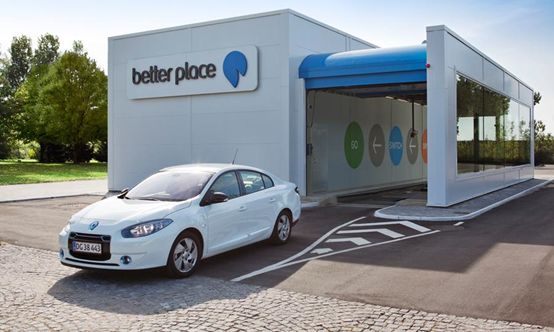
It is regrettable that having a far-sighted mind but not born in the right time is a great pity. Ten years ago, the survival environment of the electric vehicle industry was like walking on thin ice.
Better Place only survived for six years and then died out.
Because at that time, fossil fuel vehicles still dominated the world.
Because even today, when electric vehicles are thriving, battery-swapping mode is still non-mainstream.
When all automobile manufacturers did not respond to Better Place’s idea, Renault was the only one to support Better Place all the way.

Renault provided Better Place with the Fluence ZE electric vehicle. This electric car is compatible with the Better Place battery-swapping station equipment. However, only one model of car was definitely not enough for Better Place to operate, and moreover, this car was still a very niche model. During the years of cooperation between Renault and Better Place, only more than 1,000 Fluence ZE were sold.
At that time, another electric vehicle using the charging mode, Nissan Leaf, had a sharp increase in sales, which made everyone extremely pessimistic about Better Place.
Finally, in 2013, after Shai Agassi was kicked out of the board of directors, Better Place announced bankruptcy. Battery-swapping mode seemed to be downtrodden.
Try Another Route: Renault’s Battery Rental Program
Renault is really a traditional automobile manufacturer very enthusiastic about making electric vehicles. Such innovative enthusiasm really does not seem like a French enterprise.
When Fluence ZE lost nearly all sales due to Better Place’s bankruptcy, Renault’s other electric car, Zoe, was launched.
 Actually, when I read the historical story before, I always felt that Renault’s strong support for Better Place was with their own further consideration. Better Place’s bankruptcy, for Renault, was just a tuition fee for exploring a market.
Actually, when I read the historical story before, I always felt that Renault’s strong support for Better Place was with their own further consideration. Better Place’s bankruptcy, for Renault, was just a tuition fee for exploring a market.
At that time, debates on electric vehicle’s cruising range were full of discussions on charging and battery swapping in the industry. Learning from Better Place’s experience, battery swapping was not accepted. Charging mode has already occupied the mainstream, but Renault still had some thoughts on Better Place’s concept.
Renault pioneered a new sales model with their new electric vehicle, Zoe – battery leasing. Owners can buy an electric car with a leased battery at a cheaper price and pay monthly rent for the battery to Renault.
This sales model seems to be inspired by Better Place. However, Better Place wanted to become a battery operator for multiple brand electric vehicles, which was overly ideal. Renault, on the other hand, took the lead in battery swapping and became a battery supplier and operator for self-owned brand models. Do you prefer charging? No problem, just charge it. The battery is expensive, but I can lease it to you at a low price. This way, you can buy a new car at a low price.
Renault really likes to be the first to try new things. I like this exploring spirit.
After Zoe was launched, it didn’t sell well because battery leasing was controversial. The focus of contention was, of course, battery ownership.
It’s uncomfortable for many people to drive an electric car with a battery that doesn’t belong to them.
One year after its launch, Zoe’s buyers wrote a petition to Renault. They considered battery leasing unfavorable for car owners and urged Renault to change Zoe’s sales model to a whole vehicle with a battery.
I don’t know how Renault responded to the petition at that time, but from the later story, Renault did not change Zoe’s sales model of battery leasing. The only change was the leasing details, including the use of upgraded batteries.
Perhaps Zoe’s sales can show us the result of Renault’s persistence in battery leasing.
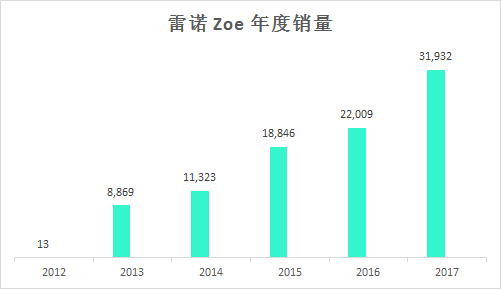
This steadily rising trend is enough to make any automaker envy.
Let’s compare with the leading players in the electric vehicle industry.

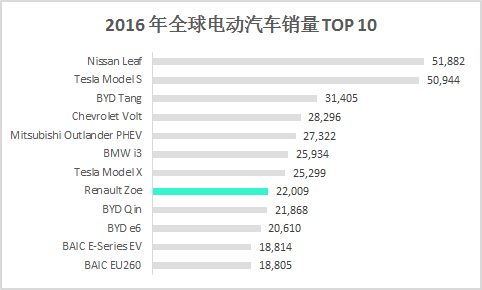
Did Renault Zoe’s performance surprise you? Could you imagine a car model with leased batteries could achieve such good results?
Being able to rank among the TOP 10 globally is thanks to its outstanding performance at home in Europe.
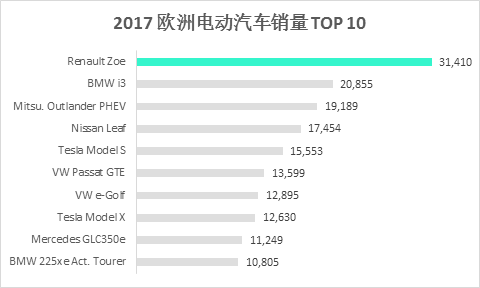
From doubts, controversies to perseverance, and eventually recognition, Renault Zoe in Europe finally achieved unparalleled success last year. From the data from 2013 to 2015, we can see that Renault Zoe is a model that grows rapidly and steadily in the European market, overtaking Nissan Leaf and Mitsubishi Outlander, the top-selling models for two consecutive years.
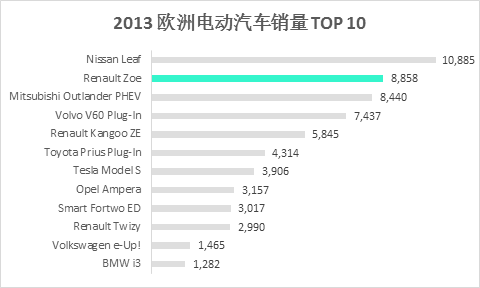
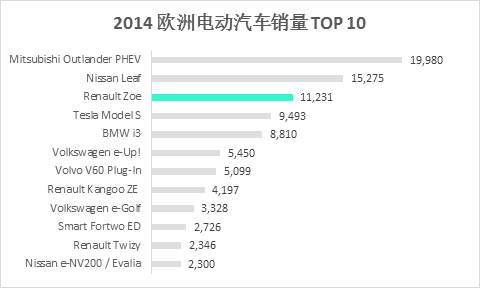
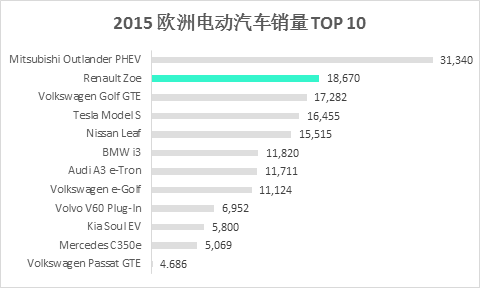
Now, the interesting question arises, how did Renault Zoe with its controversial battery leasing sales model manage to reach No.1?
The Secret to the Success of Battery Leasing Model in Reaching No.1
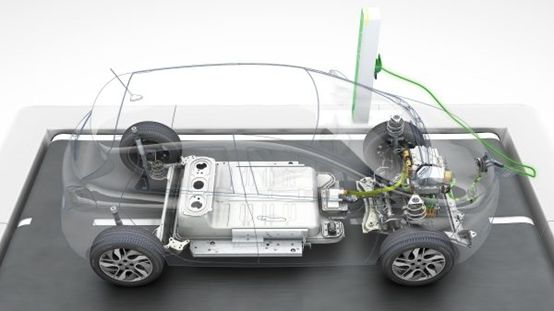
Any kind of success cannot be achieved without good timing, favorable geography, and good collaboration among people.Using these three points, it seems that we can explain why the Renault Zoe was able to become No.1 through its battery leasing sales model.
Timing: The launch of the Renault Zoe opened the way for electric cars. After 2013, electric car sales took off and standardized data statistics were available.
Location: The home environment is really helpful as 98% of the Zoe sales are made in Europe. For small cars like Zoe, there is only room for them to perform in Europe, due to Europe’s small size, general energy reserves and longstanding emphasis on environmental protection. In addition, Europe is economically developed and even non-cheap small cars have always sold well in Europe.
People: Battery leasing schemes continue to be improved. Let’s focus on this part.
Although the battery leasing model was controversial when the Renault Zoe was launched, Renault has been insisting on this model. At the same time, while insisting, Renault has also made some improvements to the terms of the battery leasing, especially after the launch of the new Zoe, Renault included in the lease contract a clause allowing for the use of upgradable batteries with higher range.
At present, Renault offers two leasing options: Z.E. Flex and Z.E Relax (Unlimited).

Z.E. Flex is a pay-as-you-go option, with fees based on annual mileage. If a Zoe equipped with a Z.E. 40 (41 kWh) battery pack is driven less than 4,500 miles (about 7,200 kilometers) per year, the battery lease fee is 59 pounds per month.
Z.E Relax is only available to retail customers, with a battery leasing fee of 110 pounds per month for unlimited mileage.
The leasing fees for battery packs with different ranges are different. The Zoe initially launched with a 22 kWh battery pack, and the new Zoe has upgraded to a 41 kWh battery pack, with the battery leasing fee increased by 10 pounds. Owners who previously purchased the old Zoe can pay for the use of the upgraded battery pack by paying the leasing fee for the 41 kWh battery pack.
This is the pricing rule for Renault battery leasing: based on the range of the battery pack and the vehicle’s mileage. Renault’s retail website also offers discounted packages for one year, two years and three years.
In this way, you can buy a base Zoe (41 kWh, 320 km range) for 14,245 pounds, which is a cheap price in Europe. The price of the battery pack is about 50,000 pounds.No one wants to deal with money issues, and if the battery leasing price is reasonable and the after-sales service is guaranteed, why not buy a low-priced, highly rated car? Plus, the vehicle can also use upgraded battery units to achieve longer range!
In April 2017, Renault announced that Zoe had signed its 100,000th battery leasing contract, making the battery leasing sales model a great success.
Renault Insists on Battery Leasing and the Subsequent Story
Of course, Renault’s persistent attempt at battery leasing must have its own considerations, and the following picture explains Renault’s original intention for battery leasing- the second life of electric vehicle batteries.
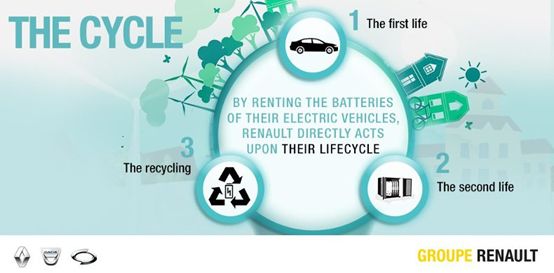
Through battery leasing, electric vehicle battery life can be maximized.
The decay characteristics of batteries inevitably lead to their inability to be used for a long time in electric vehicles. Renault Zoe’s battery will also be repaired or recycled after it has fallen below 75% of its original capacity. In Renault’s eyes, recycled batteries have a second life cycle, namely as energy reserves.
We can see Renault’s environmental concept for electric vehicle batteries from the E-STOR system developed in partnership with Connected Energy.
The E-STOR project began around 2015, aiming to establish low-cost charging stations through recycled electric vehicle battery packs. At that time, Renault Zoe had been sold in the European market for nearly two years, and sales growth was very rapid.
Matthew Lumsden, Chairman of Connected Energy, stated last August that a series of E-STOR systems developed are specifically designed for systems that enable lower-cost and more sustainable electric vehicle charging. They have already been installed in Belgium and Germany, and the operation is very good. They are currently discussing projects in the UK and Europe and looking forward to large-scale promotion.
Electric vehicle charging can be done using solar arrays, micro wind turbines, and DC fast charging. However, such charging stations are too expensive and inconvenient for some remote areas. The E-STOR system solves the problem of cost and location very well.
Coincidentally, in September of last year, Musk announced through a tweet that he plans to deploy more battery packs and solar arrays for charging stations, and that supercharging stations will no longer use the power grid in the future.
It’s very interesting to think about it. Two seemingly unrelated things have the same theme of how to be more energy-efficient and environmentally friendly.


Renault uses a leasing battery sales model to develop economical charging infrastructure. It can be said that this is a perfect example of a green circular economy.
What’s more, the battery leasing model also solves the problem of the high cost of electric vehicle batteries and the low residual value of second-hand cars due to battery degradation.
Interestingly, after the successful battery leasing sales model, Renault announced that Zoe could be sold as a whole vehicle. However, according to Renault’s statistics, 93% of car owners still choose the battery leasing option.
Renault has also made a more powerful sales model by bundling the car and battery together for leasing. The price of the new Zoe is 179 euros per month, and 60% of customers choose this plan.
Renault’s exploration of battery leasing models provides a good experience for the future of electric vehicle sales models.
When watching F1 racing before, people often wondered how a non-first-class luxury car manufacturer could repeatedly win the championship and rival McLaren and Ferrari. Now that we think about it, whether it’s gasoline cars or electric cars, Renault’s innovative spirit has always been continuing, which is why Renault can become one of the pioneers in the electric vehicle industry.
PS: Renault’s performance in FE racing is still as good as it is in F1.

- The Ultimate Answer Sheet for Domestic Electric Vehicles in 2017* How Does Tesla Layout Battery Recycling

This article is a translation by ChatGPT of a Chinese report from 42HOW. If you have any questions about it, please email bd@42how.com.
